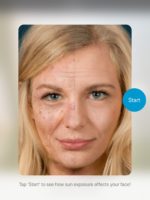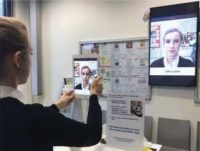
25 Jul Waiting Room App Uses Selfies To Show Patients Effects of Sun Damage
MedicalResearch.com Interview with:
 Dr. med. Titus Brinker
Dr. med. Titus Brinker
Head of App-Development // Clinician Scientist
Department of Translational Oncology
National Center for Tumor Diseases (NCT)
Department of Dermatology
University Hospital Heidelberg
Heidelberg
MedicalResearch.com: What is the background for this study? What are the main findings?
Response: While everyone in the dermatologic community appears to agree on the importance of UV-protection for skin cancer prevention, busy clinicians often lack time to address it with their patients.
Thus, the aim of this study was to make use of waiting rooms that almost every patient visiting a clinic spends time in and address this topic in this setting by the means of modern technology rather than clinicians time.
We used our free photoaging app “Sunface” which shows the consequences of bad UV protection vs. good UV protection on the users’ own 3D-animated selfie 5 to 25 years in the future and installed it on an iPad. The iPad was then centrally placed into the waiting room of our outpatient clinic on a table and had the Sunface App running permanently. The mirroring of the screen lead to a setting where every patient in the waiting room would see and eventually react to the selfie taken by one individual patient which was altered by the Sunface App.
Thus, the intervention was able to reach a large proportion of patients visiting our clinic: 165 (60.7%) of the 272 patients visiting our waiting room in the seven days the intervention was implemented either tried it themselves (119/72,12%) or watched another patient try the app (46/27,9%) even though our outpatient clinic is well organized and patients have to wait less than 20 minutes on average. Longer waiting times should yield more exposure to the intervention. Of the 119 patients who tried the app, 105 (88.2%) indicated that the intervention motivated them to increase their sun protection (74 of 83 men [89.2%]; 31 of 34 women [91.2%]) and to avoid indoor tanning beds (73 men [87.9%]; 31 women [91.2%]) and that the intervention was perceived as fun (83 men [98.8%]; 34 women [97.1%]).
 MedicalResearch.com: What should readers take away from your report?
MedicalResearch.com: What should readers take away from your report?
Response: Modern technology is not only transforming the world of melanoma treatment but also offers new opportunities that help deliver skin cancer prevention more effectively.
MedicalResearch.com: What recommendations do you have for future research as a result of this work?
Response: Future research should look at long-term behavioral change in different patient subgroups and investigate if the photoaging approach may be effectively complemented by additional information-based interventions. In addition, we would be intrigued on how much of a potential prospective effect can be attributed to the reactions of the other patients waiting. We would assume that the discussions evolving in the waiting room due to this implemented technology have an effect on the behavior of their own.
Citation:
[wysija_form id=”3″]
[last-modified]
The information on MedicalResearch.com is provided for educational purposes only, and is in no way intended to diagnose, cure, or treat any medical or other condition. Always seek the advice of your physician or other qualified health and ask your doctor any questions you may have regarding a medical condition. In addition to all other limitations and disclaimers in this agreement, service provider and its third party providers disclaim any liability or loss in connection with the content provided on this website.
Last Updated on July 25, 2018 by Marie Benz MD FAAD
